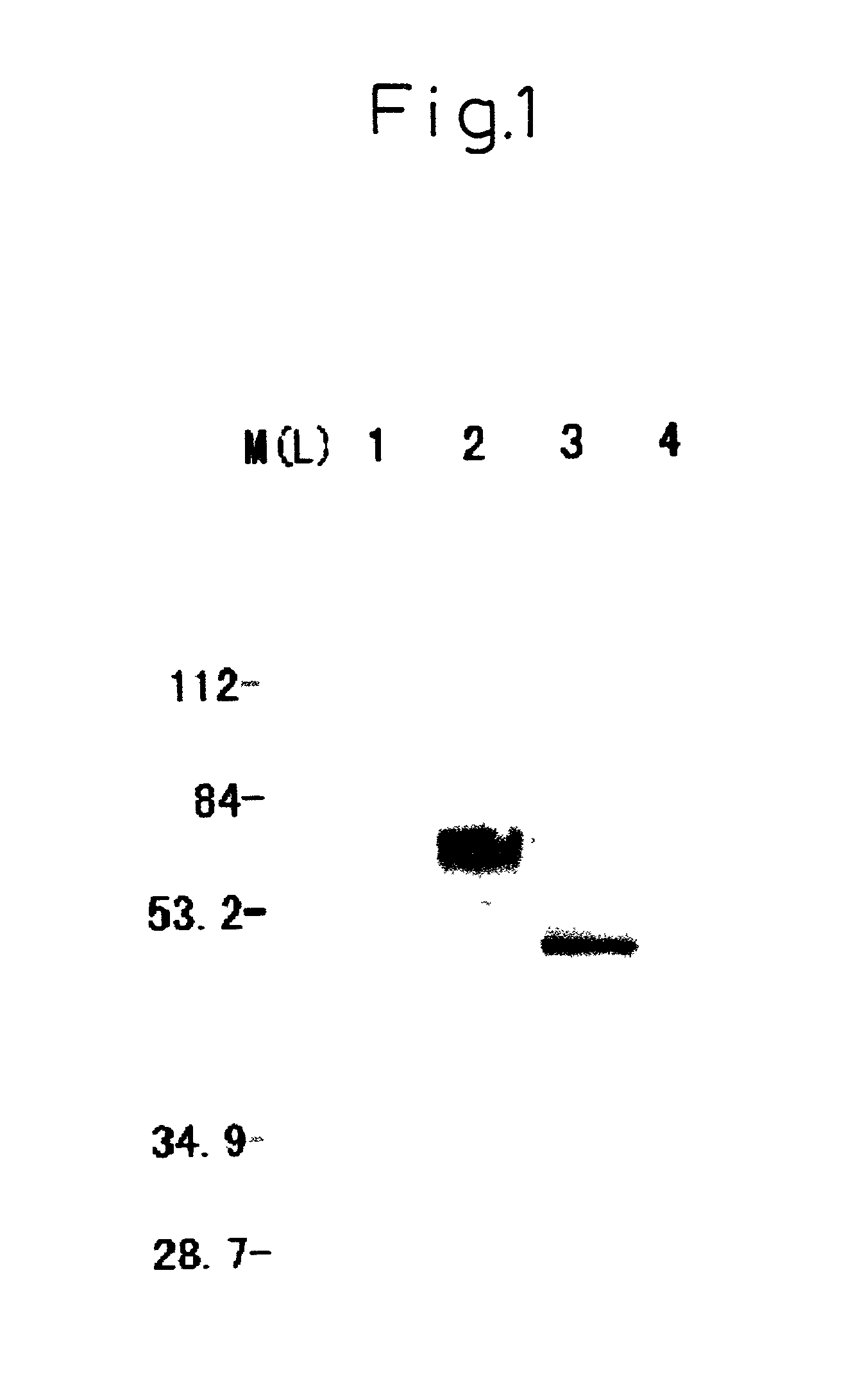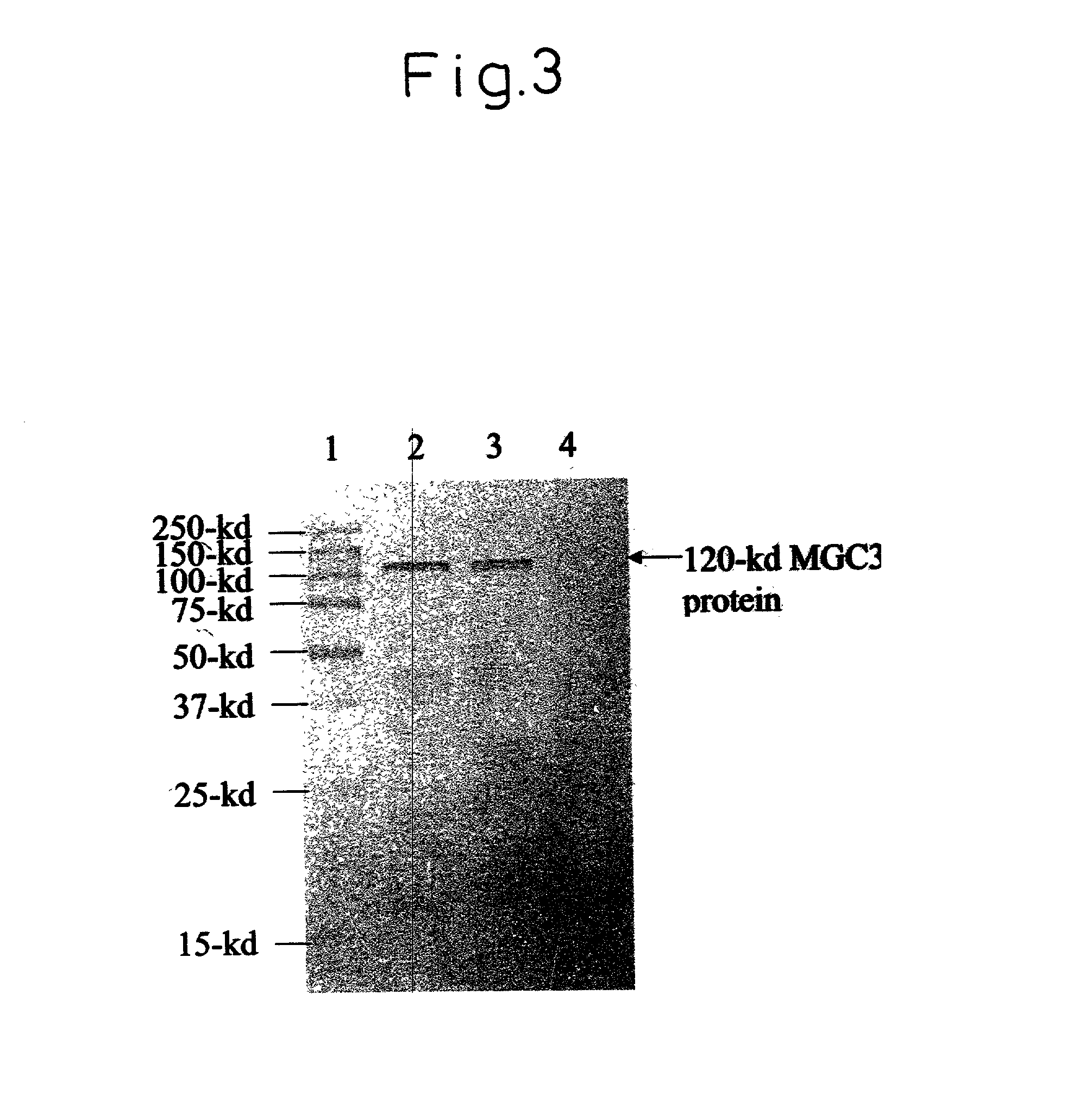Modified DNA molecule, recombinant containing the same, and uses thereof
a technology of which is applied in the field of modified dna molecule and recombinant containing the same, can solve the problems that the fusion gene to which a signal-encoding dna is added does not always produce enhanced immunogenicity, and achieves the effect of strengthening the effect of protecting against infection
- Summary
- Abstract
- Description
- Claims
- Application Information
AI Technical Summary
Benefits of technology
Problems solved by technology
Method used
Image
Examples
reference example 1
Alteration of the MDVgB Signal
[0098] The DNA sequences corresponding to two N-glycosylation sites present in a 186 bp (62 amino acids) signal sequence of Marek's disease virus gB protein as set forth in SEQ ID NO: 5 were modified based on the above principle of alteration A, and DNA encoding the amino acid sequence as set forth in SEQ ID NO: 6 was obtained.
[0099] The DNA was further modified based on the above principle of alteration B and C to obtain the MDVgB signal DNA as set forth in SEQ ID NO: 7 in which the nucleotide sequence was modified.
[0100] The modified MDVgB signal DNA was cloned into plasmid PCR-II (Invitrogen) to construct the plasmid PCR2-MDgB-CG. There are a BamHI site on the 5'-end and an EcoRI site on the 3'-end of the modified MDVgB signal DNA in said plasmid.
reference example 2
Alteration of the Rabies gG Signal
[0101] DNA encoding the rabies virus gG signal (23 amino acids) as set forth in SEQ ID NO: 8 having no N-glycosylation sites was modified based on the above principle of alteration B-D to obtain a plasmid pUC-rgG that has an modified rabies gG signal DNA as set forth in SEQ ID NO: 11.
[0102] Specific procedure to obtain this plasmid is as follows:
[0103] Thus, after annealing two synthetic DNAs as set forth in SEQ ID NO: 9 and 10, it was inserted into a 2665 bp BamHI-EcoRI-cleaved fragment of pUC18 to construct pUC-rgG.
example 1
Alteration of the TTM-1 Gene from MG
[0104] (1) Construction of pGTPs40KS-Ngly
[0105] There are four N-glycosylation sites in the TTM-1 portion of the amino acid sequence as set forth in SEQ ID NO: 12 of a plasmid pNZ40K-S described in International Patent Publication WO97 / 36924 in which a MDVgB signal-encoding DNA has been ligated to the N-terminal of the antigen gene TTM-1 derived from Mycoplasma gallisepticum. Since there are no N-glycosylation sites in the region from the EcoRI site, the start of the TTM-1 portion, to the BglII site 83 bp downstream, the portion downstream of BglII was modified based on the above principle of alteration A to obtain a plasmid pGTPs40KS-Ngly having an modified TTM-1 gene in which the sequence downstream to the BglII site has the nucleotide sequence as set forth in SEQ ID NO: 24 that corresponds to the amino acid sequence as set forth in SEQ ID NO: 23. The specific procedure to obtain this plasmid is as follows:
[0106] By using a synthetic DNA as a pr...
PUM
| Property | Measurement | Unit |
|---|---|---|
| Fraction | aaaaa | aaaaa |
| Fraction | aaaaa | aaaaa |
Abstract
Description
Claims
Application Information
 Login to View More
Login to View More - Generate Ideas
- Intellectual Property
- Life Sciences
- Materials
- Tech Scout
- Unparalleled Data Quality
- Higher Quality Content
- 60% Fewer Hallucinations
Browse by: Latest US Patents, China's latest patents, Technical Efficacy Thesaurus, Application Domain, Technology Topic, Popular Technical Reports.
© 2025 PatSnap. All rights reserved.Legal|Privacy policy|Modern Slavery Act Transparency Statement|Sitemap|About US| Contact US: help@patsnap.com



